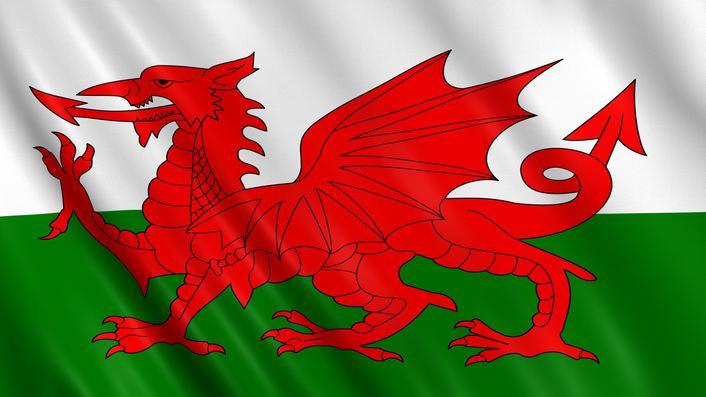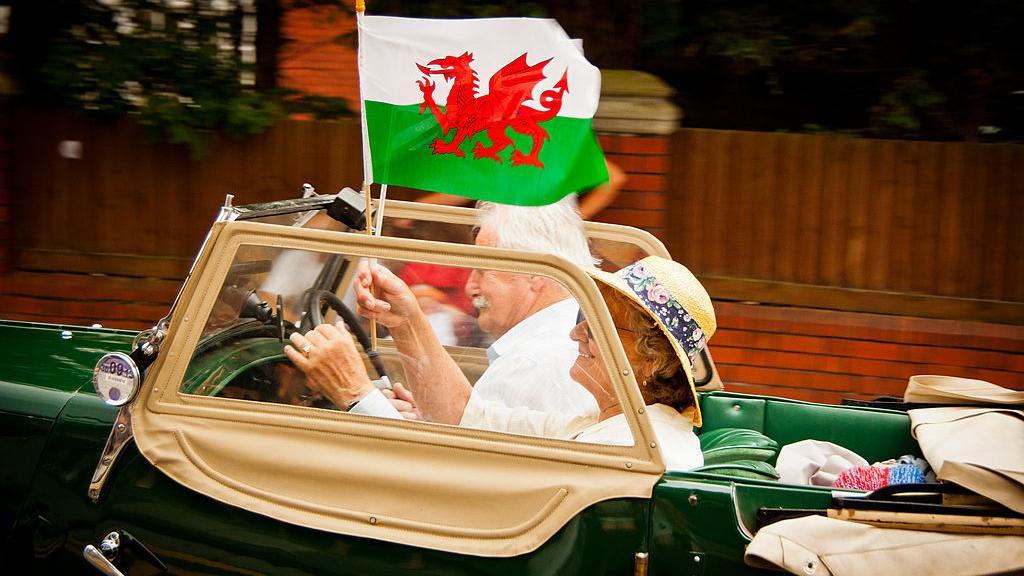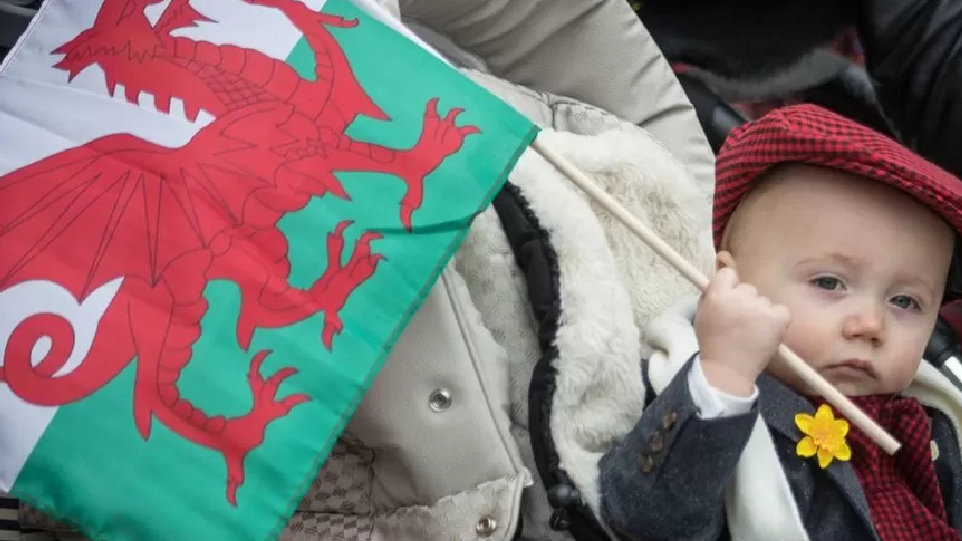What is the history of Wales' national flag?

The flag originated in the 7th Century by the Romans but it was officially recognised as Wales' national flag in 1959
- Published
From Wales’ World Cup opener against Fiji in France, to our football Euro qualifier in Lithuania, the Welsh Dragon will be proudly flying across Europe this week.
The first use of a dragon in connection with what is now Wales is thought to date from the 7th Century.
It was only officially recognised as the Welsh national flag in 1959 but the version we know today was in fact only defined in law in 2005.
Graham Bartram, an expert in flags said the flag is "unique" and a "symbol of Welsh identity".

Graham Bartram, chief vexillologist of The Flag Institute, said for many the flag is a 'symbol of Welsh identity'
The oldest recorded use of the dragon to symbolise Wales is from the Historia Brittonum, written by the historian Nennius in around 820AD.
Another historian, Geoffrey of Monmouth, in his Historia Regum Britanniae, written between 1120 and 1129, also discusses the dragon and its history.
His historia links the dragon with the Arthurian legends, including Uther Pendragon the father of Arthur, whose name translates as Dragon Head.
Geoffrey's account also tells of the prophecy of Myrddin (or Merlin) of a long fight between a red dragon and a white dragon. Thus symbolising the historical struggle between the Welsh (red dragon) and the English (white dragon).
Why is the red dragon on the Welsh flag?
- Published7 July 2019
'Wales game made me feel like a brick in Red Wall'
- Published17 June 2023
Wales not keeping up with Joneses in World Cup squad
- Published6 September 2023
'Symbol of Welsh identity'
The dragon also became a key focal point in Henry VII’s 1485 decisive intervention in the War of The Roses, according to chief vexillologist of The Flag Institute, Graham Bartram.
He said people used the dragon as a banner and rallied under it, which created a "Symbol of Welsh identity".
Mr Bartam said: “Indeed it was Henry VII who first had the Welsh Dragon blessed, at his coronation at St Paul’s Cathedral, when it was first placed on a white and green background."
Until the mid-20th Century several versions of the flag were in circulation.
Including variants with tail-up/tail-down, pointed/curved wings, differing fire from its mouth, and a myriad of poses and backgrounds.
“It was a people’s symbol, so they didn’t have to stick to a regimented heraldic concept. Plus there was no way of communicating the precise details to each other, so variations inevitably crept in." Mr Bartam added.

The 1953 Welsh flag, which provoked criticism
It was in 1959 that the flag of Wales was legally adopted.
However, it took almost 50 years more for the design to be settled.
Thomas Johnston, from the College of Arms, is responsible for the ancient and Latin heritage of flags. He explained that there is an understandable reason for the confusion.
Mr Johnston said: “As long as the flag is discernibly white and green with the red dragon on top, that’s ok by the College of Arms.
“The College of Arms’ duty is to describe the colour and pose of a flag’s appearance, as long as it's as mentioned – broadly – then as far as we’re concerned it’s a Welsh flag.
That might have cut the mustard in a pre-photographic and television age, but as time progressed, a more precise definition was needed.

Boris Johnson wearing Wales' national flag - the design we know it to be today
Mr Bartram added: “I worked for BBC Ceefax and the UN, and we needed precise definitions of nations’ flags; we couldn’t deal with variations on a theme if we were going to be precise on what we were talking about.”
Even in modern history the Welsh flag has gone through many upgrades.
From standing on a green mound, to having a rein and crown placed around its neck with the legend: “Y Ddraig Goch Ddry Cychwyn”.
Surprisingly it was one of the few issues which united Welsh nationalists and the royal family during the 1950s.
While many Welsh people objected to the portrayal of a dragon that was confined and imprisoned, the queen also objected to the literal translation, which hinted towards the dragon’s renowned virility.
So in 1959 the current design was settled upon.

The iconic Welsh flag is flown across the world to mark sporting events and St David's Day
According to Mr Bartram, there have still been causes to vary the standard of the design.
“One of my favourite Welsh flag designs came with the postal stamp honouring Wales," he said.
"We had to sort of squash it in order to make it fit in a square rather than rectangular frame, and I think it looked delightful.
“One of the other biggest differences you’ll find, if you're eagle-eyed enough – is on the side of coaches and aeroplanes.
"Normally the dragon has to always fly left, but more importantly it has to fly forwards. So when it’s on the offside of a vehicle, it’s the only correct depiction of a dragon facing rightwards.”
Mr Bartram said that flags are far from the end of their evolution.
He added: “One of the reasons for some of the strange historical designs was the cost and complexity of making a flag; the white and green would have to be stitched together, then the dragon embroidered on top.
“With newer printing techniques it’s becoming increasingly easy. In the future we could see interactive LED flags, which move around and turn to face you as you pass.”